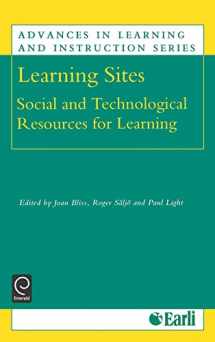
Learning Sites: Social and Technological Resources for Learning (Advances in Learning and Instruction Series, 3)
Book details
Summary
Description
Human learning, reasoning and thinking, and the different sites in which these activities take place, are the focus of this book. It presents the results of research into the nature of learning and the influence of different contexts and factors within the context of learning, the constraints that contexts place on reasoning and learning, and the nature of learning when using the tools and artefacts. It also addresses the nature of the influence of technology on learning, focusing especially on information technology and how it can influence any type of learning situation. The book begins by asking whether the context determines the nature of the knowledge to be learned, such that different sets of contextual practices related to the knowledge in question need to be acquired in order for learning to be successful. Next, it describes the forms of reasoning and learning in social and physical contexts, including but not limiting itself to logical reasoning, and asks how particular types of context constrain or activate different forms of reasoning and learning. It then looks at people learning with computers, examining how IT resources enhance or hinder learning. Finally, it compares human learning with learning done by machines in specific contexts.


We would LOVE it if you could help us and other readers by reviewing the book
Book review



